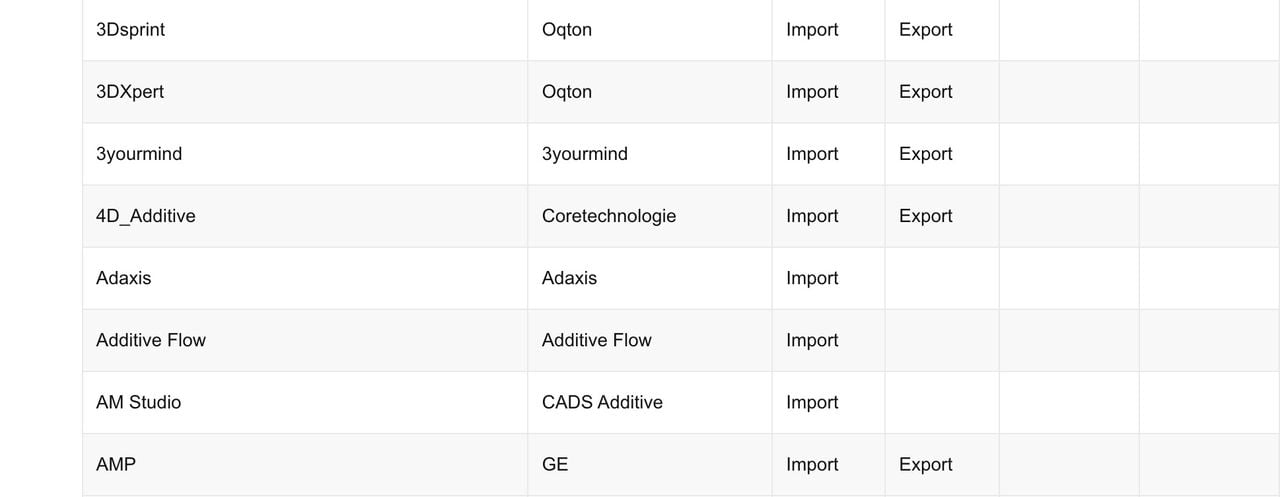
3MF is the 3D printing format of the future, but how widespread is its use these days?
I recall the dark days of years ago, when this tech was awash with random STL files. Those files attempted to provide a digital representation of a shape, but often failed miserably in several ways.
The STL format is terribly deficient:
- It doesn’t specify the units of measurement
- It allows 3D models to be non-manifold
- It doesn’t say anything about materials used
- It doesn’t say anything about ownership
- And so much more that it just can’t do
Somehow the industry survived using this format for decades, and many still use STL. Its deficiencies were so terrible that several groups attempted to create an alternative format that resolved the problems.
However, persuading everyone to adopt a new standard is extremely challenging. Systems work now, why change them? Changing costs money and time.
There had to be compelling reasons to make a change to software to allow use of a new format. That really wasn’t the case until 3MF came along.
The 3MF Consortium was formed by several companies that desired a solution, and since then it’s been joined by many other leading companies in the 3D space.
At this point it’s safe to say that 3MF is indeed the “winner” of the race to replace STL.
However, while 3MF is the winner, that doesn’t mean everyone is now exclusively using 3MF. It just means that no other alternative has a chance of succeeding at this point. 3MF still has to be integrated into many 3D software products.
How is that integration going? It turns out that the 3MF Consortium tracks use of the format, and they produce a handy checklist of products to show which ones now use 3MF.
They publish a “3MF Compatibility Matrix”, which lists companies, products and the nature of their compatibility. That might mean import and/or export. It might also mean they support this or that feature of the 3MF format.
As of this writing, the matrix has some interesting 2 entries from quite a variety of companies. By the way, both hardware and software companies are represented, because many of the 3D printer manufacturers issue software to run their own equipment. There’s also service bureaus and 3D model repositories on the list, reminding everyone that 3D file formats are used in quite a variety of places.
There are 49 companies on the list, however, at least one, Fast Radius, is no longer operating.
There are some notable names NOT on the list that are big in the 3D print space, namely Creality, BambuLab and Nano Dimension.
The former two don’t appear because their software is generally inherited from either Prusa Research or UltiMaker, as they produce open source versions. Multiple companies then adopt the open source software and — voila — they are 3MF capable.
The three major desktop software slicers (and their derivatives) are represented: PrusaSlicer, UltiMaker Cura and Simplify3D.
What does not appear are some of the desktop resin 3D print software tools, such as ChituBox, Lychee and others. In fact, many resin tools are not present, so the 3MF Foundation might want to make that a focus area in the future.
As for Nano Dimension, it’s unclear why they are not on the list. They have been doing quite a series of corporate acquisitions, so software file formats may not be a current priority for them.
Nevertheless, it is good news that the list is as long as it is, and eventually there should be no need for the list at all: everyone will just use 3MF.
Via 3MF Consortium
